🦠Life Emerges 🦠
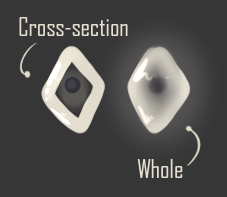 Year Pre0
Year Pre0
Susie creates her first life: an incredibly simply microorganism. This little beastie, called a Ghostis, is little more than a thin cell membrane that contains a gel-like cytosol used to keep the small nucleus moist. Without cytosol, made up of water and some rudimentary proteins and minerals, the nucleus would desiccate, which would cause the cell to die. The nucleus itself is a solid object (as opposed to being full of nucleoplasm), but is still incredibly pliable and squishy with a sponge-like inside. It contains the entire cell's genome in form of chromosomes, which are essentially DNA "recipes" that allow the cell to repair and recreate itself in the form of asexual reproduction via mitosis. DNA also creates proteins that, in reaction to their environment, tell the cell what to do
The Ghostis bubbles up from within Susie's core as she places it atop her molten surface. The cell is pre-adapted to these incredible temperatures and highly sensitive to changes within them. Going just one cell layer above the core will freeze the cytosol, killing the cell, while going one layer below into the core will melt the whole creature. They are unable to move, subject to the currents in the magma. In fact, they can do little more than exist and replicate themselves. They have an incredibly short lifespan, existing for only a minute before dying naturally. Within this time, they must reproduce as many times as possible to ensure their own survival. Of course, the Ghostis doesn't know this. It has no way to process information. It just is
With no predators of any kind, Ghostis thrive atop Susie's surface, budding away into oblivion. Their utopia is only interrupted by running out of space to put new cells after completely covering the core in a thin layer. The introduction of any more Ghostis would push another Ghostis somewhere else on top of the microorganism later where it would perish soon after. Regardless, the cells continued budding for some time, as they had nothing else to do. That is, until one of them was created with a mutation - life's first evolution
🔬 In Greater Depth...
The cell walls of the Ghostis are made up of murein, a large polycarbohydrate¹, consisting of sugars and amino acids that form a mesh-like layer. They are cross-linked with chains of pepties² that form a sort of 3D mesh, which provides structural strength as well as counteracting osmotic pressure³ caused by the cytosol. The murein must be regularly replaced, which is done by the cell's ability to preform murein hydrolysis⁴ and synthesis. This cell wall structure is the same as Earth's bacteria
¹Polycarbohydrates are the most abundant carbohydrates found in food
²Peptides are short chains of amino acids linked by peptide bonds
³Osmotic pressure is the minimum amount of pressure that needs to be applied to a solution to prevent the flow of it's pure solvent across a semipermeable membrane. That is to say, this would push the inside-thing (cytosol) out of the cell and onto the outside-thing (the core) if not stopped by the murein. This would happen because cells have an internal pressure constantly pushing up against their membranes, which keep them in check
⁴Hydrolysis is the chemical reaction in which a water molecule (H2O) breaks down one or more chemical bonds. In some instances, this means water is a solvent! In other instances, it may substitute its molecules for others or be used to eliminate other molecules
Cytosol currently makes up the vast majority of the cell. It consists mostly of water, which constitutes for about 70% of the volume. The pH of this water is roughly 7.2, which is just slightly above neutral and within the range of human cytosol (7-7.4). Within it is dissolved a complex mix of ions, small molecules, and large water-soluble molecules such as proteins. This soup is highly complex, with up to a thousand different types of small molecules in there. It's also packed with dissolved proteins, which account for 20-30% of cytosol volume, making it pretty crowded as far as the itty-bitty is concerned
The nucleus, unlike those in Earth species, is solid rather than filled with nucleoplasm. It has a highly dense nuclear matrix⁵, giving it a sponge-like texture throughout. It currently contains the whole of the cell's genome in the form of chromosomal fibers - strands of DNA interwoven into the nuclear matrix.
⁵A nuclear matrix is a network of fibers (intermediate filaments) throughout the nucleus that provides structural support. IFs are a cytoskeletal component of cells made up of families of related proteins that share common structural and sequence features. Meanwhile, a cytoskeleton is a complex, dynamic network of proteins present in the cytoplasm (which is the cytosol + the organelles). It extends from the nucleus to the cell membrane and can preform many functions, though its primary is to help the cell keep its shape. It cannot currently contract, making the cell immobile
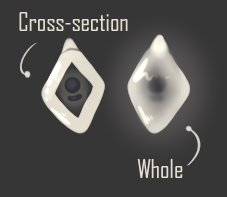 Year ~Pre700
Year ~Pre700
✨ Ghostis > Pointy Ghostis
The mutation, wild and free as it is, consists of a single, bean-shaped organelle in addition to the nucleus. This organelle is sort of a rudimentary double of the nucleus, - sort of a detached parasitic twin - but contains vastly less information within. In fact, the only thing it can communicate to the cell is how to make the cell membrane, but something's off... The membrane generated using the neo-organelle is just a touch too hard, manifesting as a tiny protrusion on the tip of the cell. Don't get the wrong idea. This "spike" is not sharp in any way, but when jammed up against a Ghostis with absolutely nowhere to go, it's enough to puncture their cell membrane, killing them and leaving room for this new Pointy Ghostis to live without fear of freezing or melting.
Due to having added material in their genetic code, Pointies reproduce slightly slower than their regular counterpart. This seems them much more uncommon than the all-encompassing Ghostis, but it's enough for them to gain a small foothold on the core's surface. They begin to grow their numbers one by one, spilling cytosol across the surface in their wake.
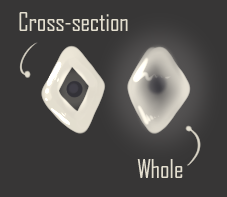 Year ~Pre750
Year ~Pre750
✨ Ghostis > Fleshy Ghostis
After fifty years or so of this one-sided battle, another mutation surfaces from the base Ghostis. The Fleshy Ghostis too has a membrane-based mutation, but not in the form of cool spikes. Instead, the membrane is slightly thicker. This sacrifices some of the cell's cytosol and was, in fact, the reason that this mutation took so long to stabilize. In many, many cases of membrane thickening, too much cytosol was compromised and the cell desiccated upon creation, therefore not duplicating its genetic information. After evolving presumably hundreds of times, one of these cells managed to get the ratio just right and survive the growing population of Pointies long enough to spread its genes. Somewhere atop the core, very near where the Pointy Ghostis is making its stand, the Fleshy Ghostis begin to hold their own, being too thick for their rivals to puncture - at least, not without significant pressure. Pressue of that magnitude is much more likely to squeeze a cell on top of the core-wide cell layer rather than popping a Fleshy Ghostis.
This type of Ghostis is the slowest of all three types to reproduce, getting out much fewer clones before they naturally expire. This sees them spread very slowly, overwhelmed by the base Ghostis and the Pointies. With no offense of their own, the Fleshies are still at risk of freezing if they are separated from the core. This makes one of the only places they can survive near their enemies themselves, as the the Pointies create extra space for the Fleshies to move into. The arms race to outcompete each other begins... if only we had more genetic material to work with, that is
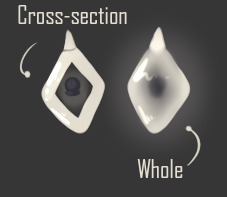 Year ~Pre775
Year ~Pre775
✨ Pointy Ghostis > Lancer
After taking some time to think on it, the Pointy line develops a new adaptation: their nucleus and neo-organelle semi-fuse together, leaving them with slightly more genetic material to work with thanks to not having to generate 100% of the neo-organelle in the places where it fuses. They rapidly use this available space to make their spike longer. These organisms, now Lancers, become able to pierce the Fleshy Ghostis' thick skin if they get the angle just right. If not enough pressure is applied via the masses, the Lancer will not succeed in its "hunt".
Evolution now enters a sort of stalemate, as nobody has enough DNA pieces to make anything much different than what we already have. During the hundreds of years that follow, Pointy Ghostis and Lancers propagate with a ferocity while the overwhelming Ghostis population declines and Fleshies struggle to clone themselves faster than they can be destroyed. However, global supremacy isn't all fun and games for those with sharp bits of membrane. As their populations grow, Pointies and Lancers begin to take collateral damage from each other on top of the problems they were already dealing with. More cytosol flows atop Susie's molten core than ever, undecaying. If this process continues indefinitely, there will eventually be so much extra liquid atop the surface that the cells are separated from the core and life as Susie currently knows it will die out
 Year Pre0
Year Pre0 Year ~Pre700
Year ~Pre700 Year ~Pre750
Year ~Pre750 Year ~Pre775
Year ~Pre775 Year ~Pre900
Year ~Pre900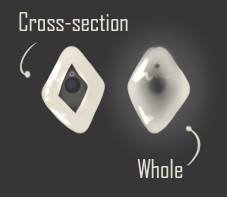 Year ~Pre900 (later)
Year ~Pre900 (later)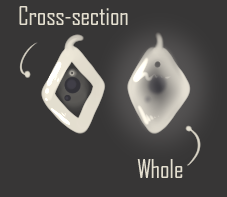 Year ~Pre901
Year ~Pre901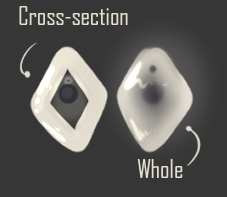 Year ~Pre901 (later)
Year ~Pre901 (later)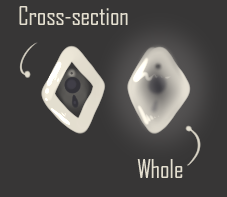 Year ~Pre901 (later x2)
Year ~Pre901 (later x2)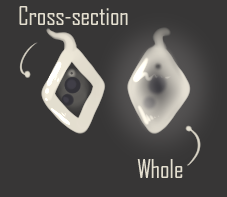 Year ~Pre902
Year ~Pre902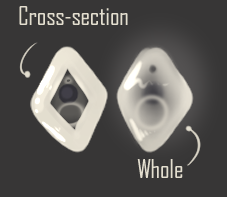 Year ~Pre902 (later)
Year ~Pre902 (later) Year ~Pre902 (later)
Year ~Pre902 (later)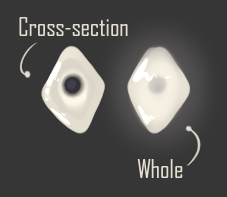 Year ~Pre903 (later)
Year ~Pre903 (later)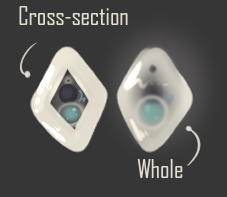 Year ~Pre903 (later)
Year ~Pre903 (later) Year ~Pre904
Year ~Pre904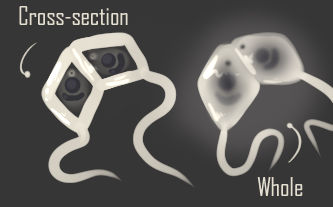 Year ~Pre904 (later)
Year ~Pre904 (later)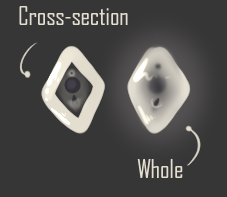 Year ~Pre905
Year ~Pre905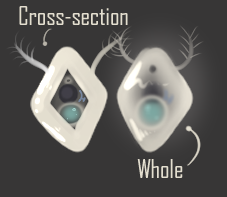 Year ~Pre905 (later)
Year ~Pre905 (later)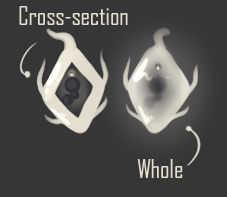 Year ~Pre905 (later)
Year ~Pre905 (later)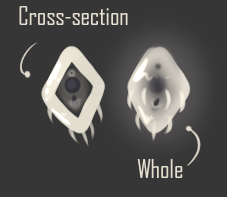 Year ~906 (later)
Year ~906 (later)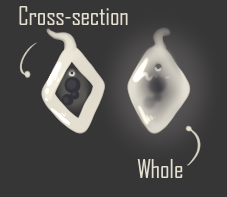 Year ~Pre906 (later)
Year ~Pre906 (later)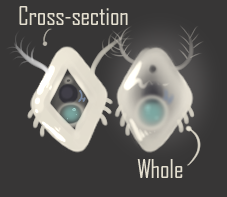
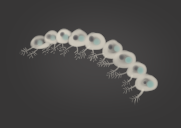 Year ~Pre907
Year ~Pre907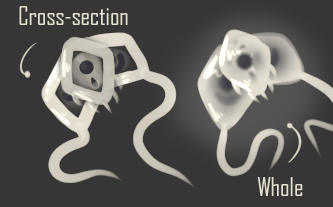 Year ~908
Year ~908